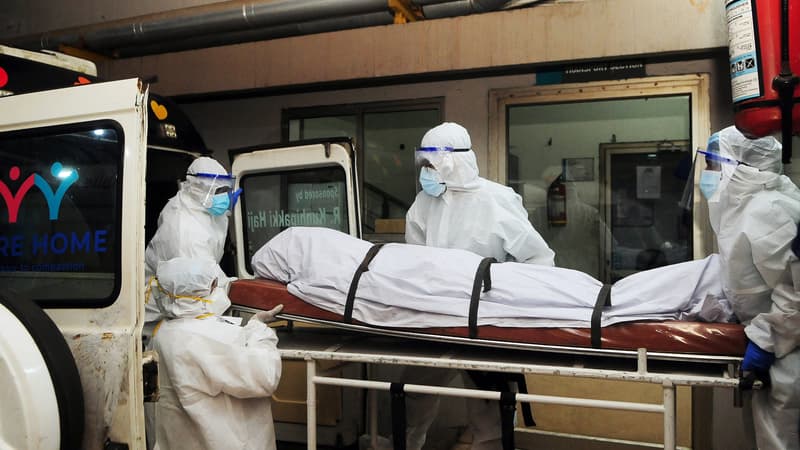Like Covid-19 or Ebola, the Nipah virus is considered by the World Health Organization (WHO) as one of the diseases that could cause a global epidemic. For this reason, Indian health authorities are on alert for the return of the disease, which has so far infected at least six people, according to India Today. Among those infected, two people died.
Given the appearance of this epidemic outbreak, India is forced to confine part of the south of its territory. This is particularly the case in the city of Kozhikode, where schools are closed and public gatherings banned until at least September 24.
This is not the first time that humans have faced the Nipah virus, hence the concern of the Indian health authorities and the rapid application of restrictive measures.
It was in 1998 when the first cases were recorded. The onset of the disease was very violent. Nipah first infected pigs, before being transmitted to humans, causing around a hundred deaths. In addition, as a preventive measure, one million pigs had to be slaughtered.
Contamination by “bat urine or saliva”
Since its first appearance, the disease crossed the borders of Malaysia, reaching Singapore, where a person who worked in a slaughterhouse lost his life as a result of this disease. A place of transmission that also remembers the Covid-19 epidemic.
If the situation is similar, it is because it is also a zoonosis, an infectious disease that has passed from animals to humans. Fruit bats are considered natural carriers of Nipah.
The first Nipah infections in humans were thought to result from unprotected exposure to swine secretions or tissue from a diseased animal. The following would have occurred after the consumption of “fruits or fruit-based products (such as raw date palm juice) contaminated by the urine or saliva of fruit bats.”
There have also been infections between humans, although at the moment they are “limited”, as Olivier Reynard, a researcher at Inserm and specialist in the transmission of the virus, explains to BFMTV.com. However, Nipah belongs to the measles family, a much more transmissible virus. Therefore, the virus has an “evolution potential” that would increase these transmissions.
More and more diseases of this type cross the species barrier. On the one hand, industrial agriculture increases the risk of spreading pathogens. On the other hand, deforestation increases contact between wildlife, domestic animals and humans.
High mortality
Since the first appearance of the virus 25 years ago, other localized epidemics have occurred, notably in Bangladesh, where 100 people lost their lives in 2001, but also in India, where five outbreaks have been recorded in just over the last five years. .
What are the symptoms of Nipah? If the WHO indicates that there are asymptomatic forms, the range of effects is varied. Fever, headache, muscle pain, vomiting, and sore throat have been reported.
In the most severe forms, pneumonia and cases of acute respiratory distress have been observed. Eventually, the seizures “evolve into coma” within 48 hours.
Equally worrying is the mortality rate of those infected. Still according to the world organization, it varies between 40 and 75%. This is much more than Covid-19, whose fatality rate ranges between 0.5 and 1%, and more or less the same mortality as Ebola, although it varies greatly depending on the epidemics.
“With our current information, we do not know if the virus will evolve to become more transmissible or more deadly,” underlines Mathieu Iampetro, specialist in immunology issues related to Nipah.
Neither treatment nor vaccine
The lethality of viruses, including Nipah, varies according to different strains, but also according to local epidemiological surveillance capabilities and the ability of health systems to care for patients. The agency notes that there is no known way to remedy Nipah:
“There is currently no specific medication or vaccine against infection with the virus.”
Antivirals were used, without success. Monoclonal antibody treatment is also being tested in a 9-year-old boy who was put on a ventilator after contracting the disease.
“There is no approved treatment for man. Some have been tested and found to be ineffective, others have been rejected because they had too many side effects,” says Mathieu Iampetro.
Additionally, a French vaccine is currently being developed, although no clinical trials have yet been conducted in humans. And this even if vaccine research focuses more on animal vaccines.
In France, for the moment, there is no reason to worry. There have been no known cases of Nipah infection in France. As the European Disease Control Agency points out, no cases of infection with the virus have been recorded in the rest of Europe either. Additionally, the only fruit bat residing in Europe is an Egyptian species, which currently cannot carry the virus.
Source: BFM TV


